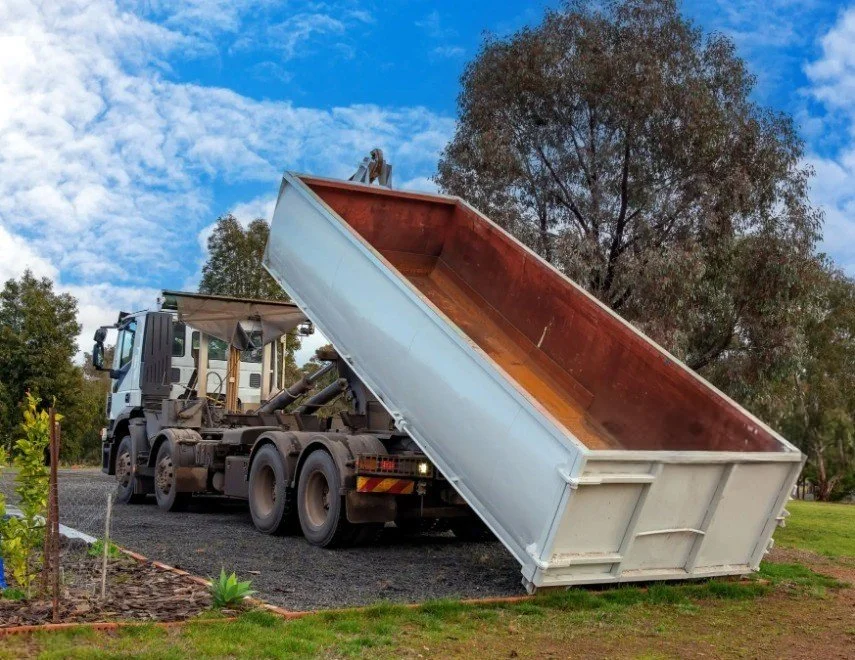A Guide to Sizing: Which Dumpster is Right for You in Honolulu?
Introduction
Choosing the right dumpster size is one of the most important decisions when planning a clean-up, renovation, or construction project in Honolulu. Whether you’re a homeowner clearing out clutter or a contractor managing job-site debris, selecting the proper size ensures cost-efficiency, safety, and compliance with local regulations.
Dumpster sizing can seem confusing at first — 10-yard, 20-yard, 30-yard, 40-yard — but each serves a distinct purpose. Picking one that’s too small may lead to overflow and additional rental costs, while an oversized dumpster can waste space and money.
In Honolulu, where space can be limited and environmental guidelines are strict, understanding dumpster sizes helps you make the most of your rental. This guide breaks down the key differences, explains common usage scenarios, and offers practical tips to help you choose the perfect dumpster size for your needs.
Dumpster Sizes Explained
Dumpster sizes are typically measured in cubic yards, representing the total volume of debris they can hold. To give context, one cubic yard equals roughly the size of a standard washing machine.
Here’s an overview of the most common dumpster sizes available in Honolulu and what each is best suited for:
10-Yard Dumpster
Capacity: Around 3 pickup truck loads
Dimensions: Approximately 10–12 feet long, 7 feet wide, and 3.5 feet high
Best for:
Small home cleanouts
Yard debris removal
Minor remodelling projects (like a bathroom or small kitchen)
Concrete, dirt, or asphalt disposal (due to weight limits)
The 10-yard dumpster is the smallest option, ideal for tight spaces and light waste loads. It fits easily in most driveways and is perfect for residential properties in areas like Kaimukī, Mānoa, and Kailua.
15-Yard Dumpster
Capacity: About 4.5 pickup truck loads
Dimensions: Roughly 12–14 feet long, 7 feet wide, and 4.5 feet high
Best for:
Medium home projects
Garage or attic cleanouts
Small roofing or flooring replacements
This is a versatile option for homeowners who need a bit more capacity without taking up too much space. It’s a great balance between compactness and functionality.
20-Yard Dumpster
Capacity: Around 6 pickup truck loads
Dimensions: About 14–16 feet long, 7.5 feet wide, and 5 feet high
Best for:
Larger home renovations
Full-house cleanouts
Deck removals or roofing jobs
Landscaping and yard overhauls
The 20-yard dumpster is the most popular rental size in Honolulu because it works for both residential and light commercial projects. It’s large enough for bulky materials but still manageable for driveways or residential zones.
30-Yard Dumpster
Capacity: About 9 pickup truck loads
Dimensions: Roughly 20 feet long, 7.5 feet wide, and 6 feet high
Best for:
Major home renovations
Construction and demolition projects
Multi-room remodels
Commercial property cleanouts
Contractors and property managers often choose the 30-yard dumpster for projects that generate heavy debris over multiple days. It’s commonly seen on larger job sites around Honolulu, including commercial remodels in the urban core.
40-Yard Dumpster
Capacity: About 12 pickup truck loads
Dimensions: Approximately 22 feet long, 7.5 feet wide, and 8 feet high
Best for:
Large-scale construction
Commercial renovations or demolitions
Major event clean-ups or estate clear-outs
Industrial waste removal
The 40-yard dumpster is the largest standard option available. It’s ideal for long-term, high-volume waste management, but it requires ample space for delivery and pickup.
Space Requirements
One of the most overlooked aspects of renting a dumpster in Honolulu is space planning. The right size isn’t just about volume — it’s about ensuring the container fits safely and conveniently on your property.
Driveway and Property Access
Before renting, measure your driveway or the intended drop-off location. Most roll-off dumpsters need about 60 feet of clearance for safe delivery and pickup. Ensure there are no overhanging branches, low power lines, or narrow gates that could interfere with access.
If you live in dense neighbourhoods such as Waikiki, Kakaako, or Downtown Honolulu, space may be tight. In these cases, you might need to apply for a temporary street placement permit from the City and County of Honolulu’s Department of Transportation Services.
Surface Type
Place dumpsters on a flat, hard surface — concrete or asphalt works best. Avoid soft lawns or uneven terrain, as the heavy weight can cause sinking or damage. For added protection, lay down plywood before placement to distribute weight evenly.
Clearance for Loading
Make sure there’s enough space to open the dumpster door fully for easy loading. This is especially important for large 30-yard or 40-yard containers.
Usage Scenarios
Choosing the right dumpster size depends on your type of project, material weight, and amount of debris. Below are typical usage examples to guide your decision:
1. Home Renovations and Remodelling
Best Sizes: 10-yard, 15-yard, or 20-yard
Why: Perfect for disposing of drywall, flooring, old fixtures, and cabinetry.
Tip: Heavy materials like tiles or concrete fill dumpsters faster — choose a smaller size but plan for multiple hauls if necessary.
2. Yard and Landscaping Projects
Best Sizes: 10-yard or 15-yard
Why: Ideal for green waste, branches, soil, and sod.
Tip: Honolulu regulations encourage green waste recycling — separate organic debris when possible.
3. Roofing Jobs
Best Sizes: 15-yard or 20-yard
Why: Roofing shingles are heavy; you’ll need a container that balances capacity with weight restrictions.
Tip: Check with your rental company about tonnage limits to avoid overweight fees.
4. Moving and Decluttering
Best Sizes: 10-yard or 15-yard
Why: For household junk, furniture, and old belongings during downsizing or relocation.
Tip: Donate usable items to Honolulu’s local charities before disposal to minimize waste.
5. Construction and Demolition
Best Sizes: 30-yard or 40-yard
Why: Handles large debris volumes — concrete, metal, lumber, and mixed waste.
Tip: Separate recyclables (wood, metal) when possible for sustainability and potential disposal savings.
6. Commercial or Event Waste
Best Sizes: 20-yard to 40-yard
Why: Ideal for businesses, festivals, or property cleanouts that generate consistent or high waste volumes.
Tip: For recurring needs, consider a long-term contract with scheduled pickups to stay compliant with city waste rules.
How to Avoid Under/Over Sizing
Selecting the wrong dumpster size can cost more in the long run — either through overflow fees, extra trips, or unused space. Here’s how to strike the right balance:
1. Estimate Your Waste Volume
Visualize your debris pile or consult your contractor. As a rough guide:
A small room remodel → ~10 yards
A medium renovation or deck removal → ~20 yards
Full-home remodel → ~30–40 yards
If you’re unsure, ask your dumpster provider for guidance. Most local companies in Honolulu have experience matching project types with the right size.
2. Account for Material Weight
Different materials affect sizing:
Light materials (like cardboard or furniture) may require more space but are less dense.
Heavy materials (like concrete or roofing shingles) fill up quickly and can exceed weight limits even in smaller containers.
In Honolulu, landfill weight limits are strictly enforced, and overages can lead to additional charges. Always check the tonnage allowance for your rental.
3. Consider Project Duration
Longer projects with ongoing debris generation — like commercial renovations — may benefit from a slightly larger size or multiple pickups to avoid overflow and downtime.
4. Don’t Forget Access and Safety
Choosing the largest dumpster possible isn’t always the best idea. If space is limited, a 20-yard dumpster may be more practical than a 30- or 40-yard one. Oversized containers can block driveways or create hazards for pedestrians and vehicles.
5. Get Professional Advice
Most Honolulu dumpster rental companies offer free consultations. Provide details about your project scope, debris type, and location, and they can recommend an appropriate size. It’s better to plan ahead than to pay for multiple hauls later.
Conclusion
Selecting the right dumpster size in Honolulu ensures your project runs smoothly, stays within budget, and complies with local waste management standards.
Smaller dumpsters (10–15 yards) are perfect for residential clean-ups, small remodels, and yard work.
Medium dumpsters (20 yards) handle larger home projects and light commercial use.
Larger dumpsters (30–40 yards) are ideal for construction, demolition, and industrial-scale waste disposal.
Always consider your project type, available space, and material weight before making a decision. And when in doubt, consult a local dumpster rental expert who understands Honolulu’s space constraints and environmental guidelines.
By sizing your dumpster correctly, you’ll save money, reduce waste trips, and contribute to a cleaner, greener Oahu. Whether it’s a weekend home project or a major construction effort, the right dumpster size makes all the difference.

